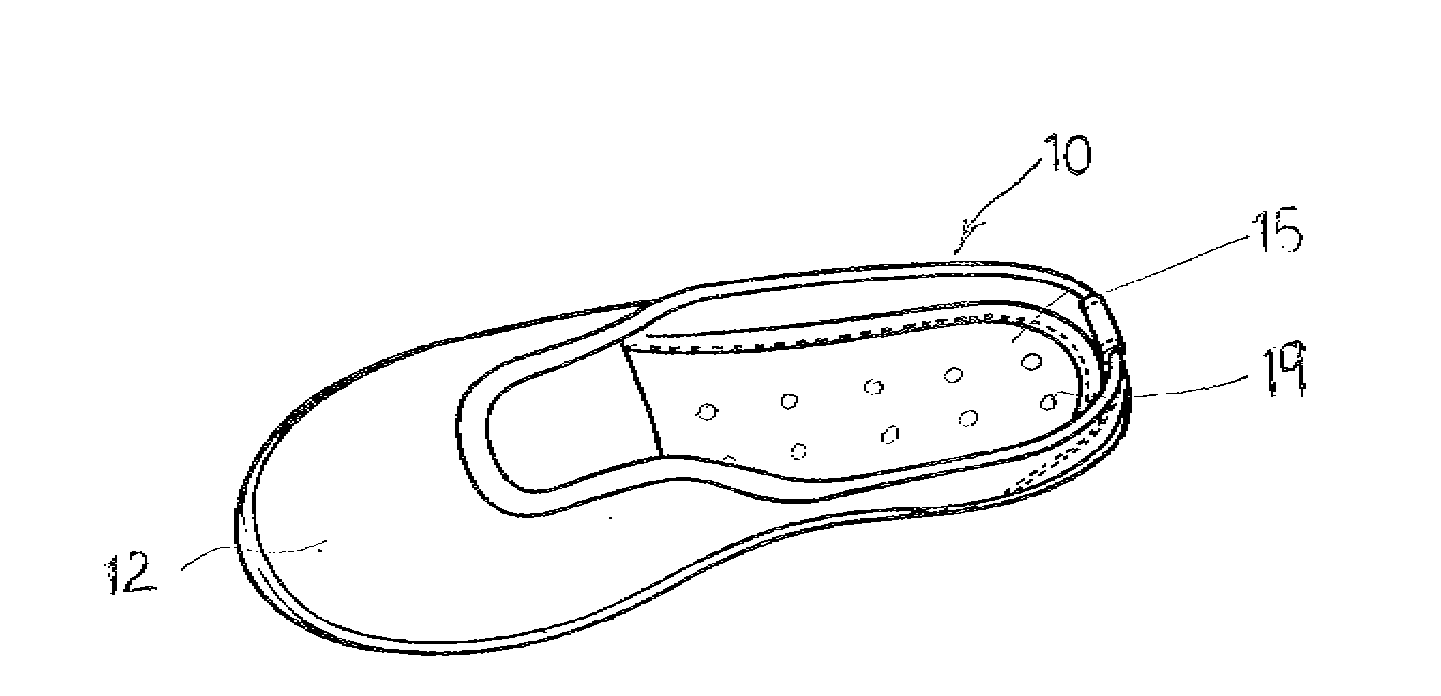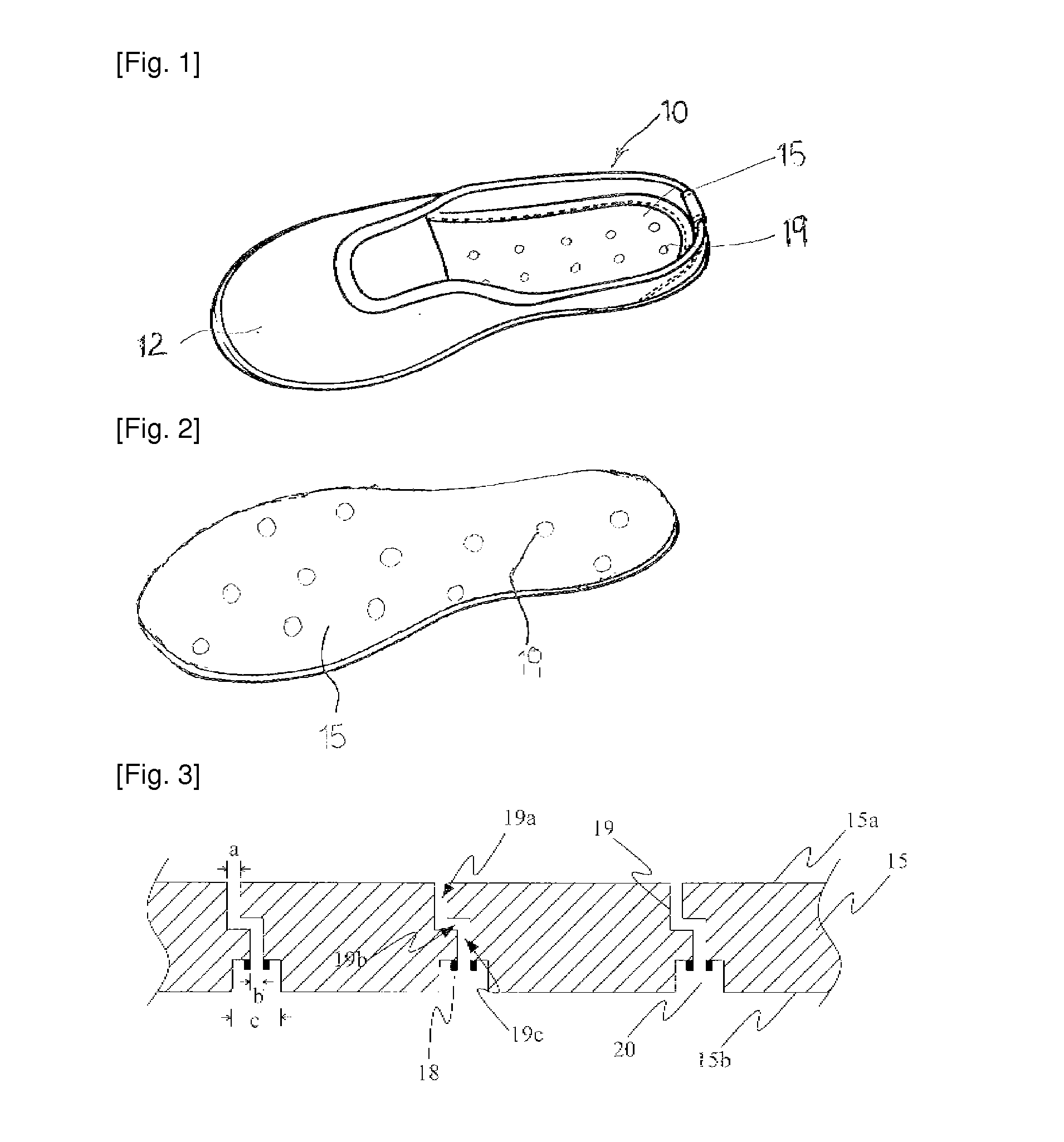House shoes provided with air-holes
a technology of house shoes and air holes, which is applied in the field of house shoes with bottom members, can solve the problems of inability to solve disadvantages of poor ventilation properties of house shoes for students, so as to reduce the cooling energy in summer session and good health condition
- Summary
- Abstract
- Description
- Claims
- Application Information
AI Technical Summary
Benefits of technology
Problems solved by technology
Method used
Image
Examples
Embodiment Construction
[0009]A more complete appreciation of the invention, and many of the attendant advantages thereof, will be better appreciated by reference to the following detailed description.
[0010]FIG. 1 is a drawing for showing a house shoe provided with a hole for airing according to an embodiment of the present invention, and FIGS. 2 and 3 respectively are a bottom view and a section view of a bottom member of the house shoe in FIG. 1, and show a bending shape of a hole for airing formed on a bottom member.
[0011]As shown in FIG. 1, a house shoe (10) consists of a shoe body (12) covering an instep of a foot and wrapping sides and a heel of a foot and a bottom member (15) attached on a lower part of the shoe body, supporting and protecting a sole of a foot in wearing state. The shoe body (12) and the bottom member (15) are made of urethane or rubber and necessarily, an insole may be provided on the bottom member (15). FIG. 1 shows a house shoe having no insole. Several holes (19) for airing are ...
PUM
 Login to View More
Login to View More Abstract
Description
Claims
Application Information
 Login to View More
Login to View More - R&D
- Intellectual Property
- Life Sciences
- Materials
- Tech Scout
- Unparalleled Data Quality
- Higher Quality Content
- 60% Fewer Hallucinations
Browse by: Latest US Patents, China's latest patents, Technical Efficacy Thesaurus, Application Domain, Technology Topic, Popular Technical Reports.
© 2025 PatSnap. All rights reserved.Legal|Privacy policy|Modern Slavery Act Transparency Statement|Sitemap|About US| Contact US: help@patsnap.com


